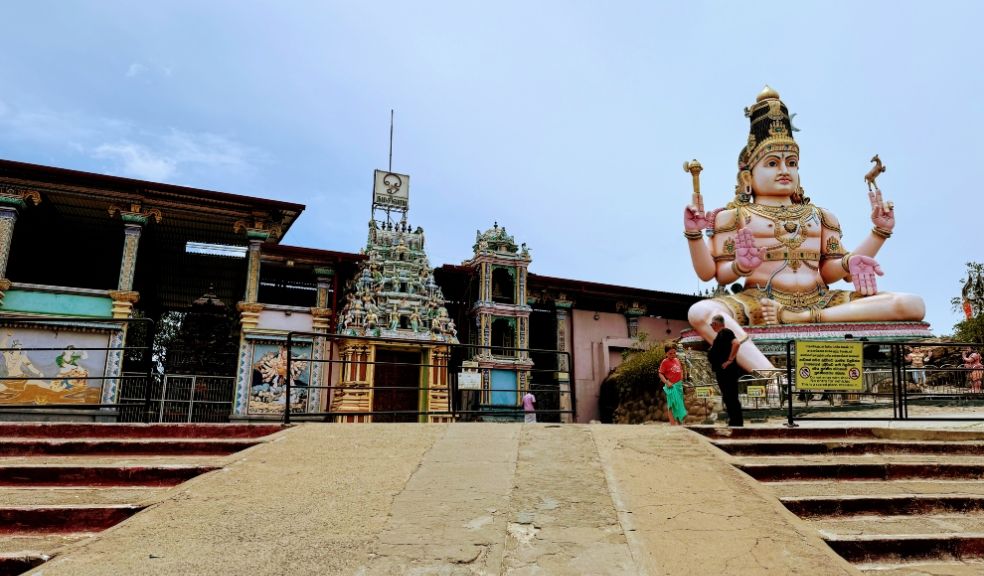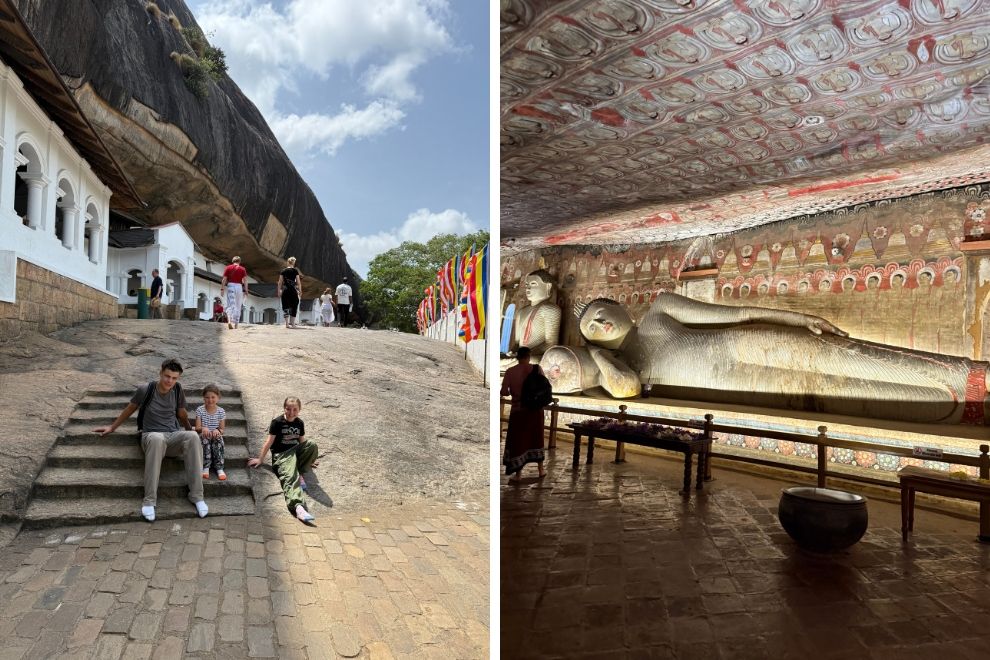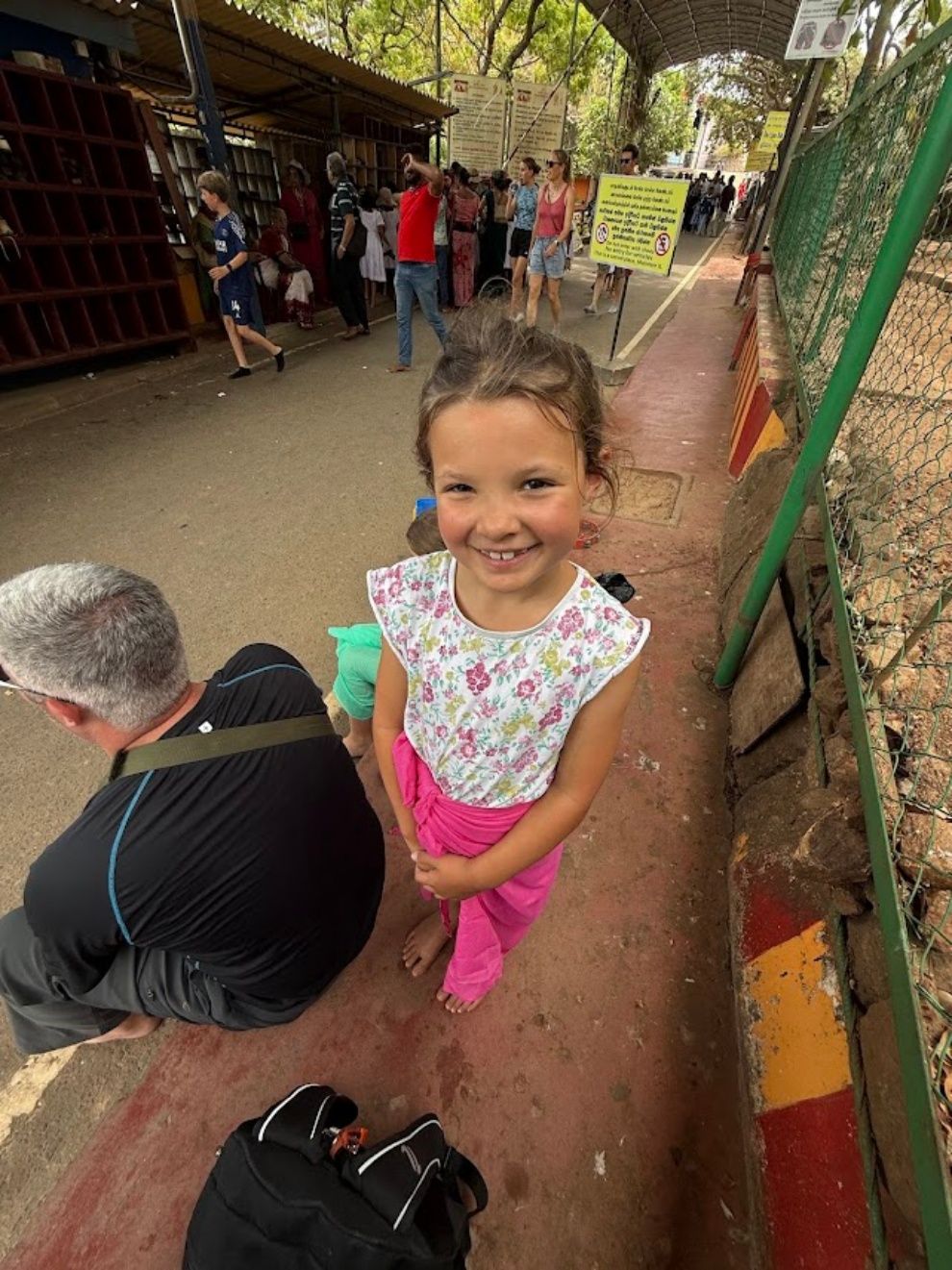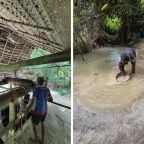
Cultures, Questions and Compassion: Learning through Faith in Sri Lanka
One of the most powerful parts of world schooling isn't just seeing the world, it’s learning how people live, believe, and belong in it.
Here in Sri Lanka, we’ve been immersed in something truly extraordinary; a landscape where Buddhist temples, Hindu kovils, churches, and mosques sit side by side. Each has its own rhythm and rituals, and every one has become a real time lesson in respect, diversity, and humanity.
From temple courtyards in Sigiriya to the quiet churches of Negombo, from coastal shrines in Trincomalee to incense scented altars in Arugam Bay, this island has taught our children more about religion and faith than any textbook ever could.
Religion, Not Just as a Subject - But as a Lived Experience

In Trincomalee, we walked barefoot up the steps to Koneswaram Temple and watched the faithful pour milk offerings while drums echoed through the sacred space. Near our hotel we stumbled upon a quiet Catholic church where a handful of worshippers lit candles in silence.
The contrasts and similarities sparked real curiosity:
- “Why are there so many colours at the Hindu temple?”
- “Why do some people bow and others kneel?”
- “How can so many beliefs live so close together?”
These questions didn’t come from a textbook. They came from being there.
Kindness Beyond Belief
But it wasn’t just the shrines that taught us something.
In Arugam Bay, a driver we spoke to talked about his country with pride and humility. He touched his belly and said:
“Sometimes we may have nothing in here… but we always greet with a smile. And we give what we can, especially to strangers.”
That line has stayed with us. It sums up what we’ve felt over and over again, kindness that transcends religion, language, or status. A generosity of spirit that seems woven into Sri Lankan life, no matter which faith someone follows.
Whether we were buying bananas from a barefoot vendor or walking past families gathered outside a temple, that warmth was constant.
Women in Faith, Family, and Culture
One of our goals in world schooling is to help our kids notice - who speaks, who listens, who leads.
In Sri Lanka, religion often shapes how women participate, and it changes from place to place.
- In Buddhist temples near Sigiriya, we saw women dressed in white sarongs, offering flowers and leading chants.
- In Hindu kovils in Trincomalee, women were central - preparing offerings, blessing shrines, coordinating rituals.
- In coastal areas like Arugam Bay, the Muslim influence is visible, and women are more modestly dressed, often participating quietly but holding strong roles in family life.
- In Negombo’s Catholic churches, women led singing, cleaned altars, and seemed to run entire communities from behind the scenes.
Each religion, each region, gave our kids a new perspective on gender roles and led to important conversations:
- “Why don’t women become monks?”
- “Why are the men up front?”
- “Do women choose how they dress — or do they have to?”
- "Why do they always give the menu to you Daddy and not Mummy?"
We didn’t have all the answers. But sitting and discussing is equally important.
As parents raising two girls, these moments are especially powerful. Seeing how women are included (or not) in different communities helps our daughters build awareness and confidence in their own voices.
And just as importantly, it shapes the kind of man our teenage son is becoming - one who notices inequality, values fairness and grows up to respect and stand beside strong women.
Where We’ve Been — and What’s Still to Come
So far, our Sri Lankan journey has taken us to:
- Negombo – Catholic traditions and coastal hospitality
- Sigiriya – Buddhist temples and ancient spiritual sites
- Trincomalee – A fusion of Hindu devotion and colonial Christian influence
- Arugam Bay – Laid-back vibes with visible Islamic heritage
And we’re still heading south — to Ella’s misty highlands, the quiet coves of Tangalle, and the historic streets of Galle. We know each place will bring new lessons, new questions, and new ways to see the world.
What We Hope Our Kids Remember

That faith looks different in every corner of the world, but kindness feels the same.
That listening to another person’s beliefs doesn’t weaken your own, it makes you wiser.
That learning happens in temples, beaches, buses, and market stalls, not just classrooms.
WanderLearn Prompt: Cultural Curiosity
Next time you visit a new sacred space with your children, invite them to observe and reflect:
- What do they notice first?
- What sounds, smells, or symbols stand out?
- Who’s leading? Who’s participating?
- What would they ask someone if they could?
Follow our family’s journey on Facebook and Instagram @WanderLearn
















